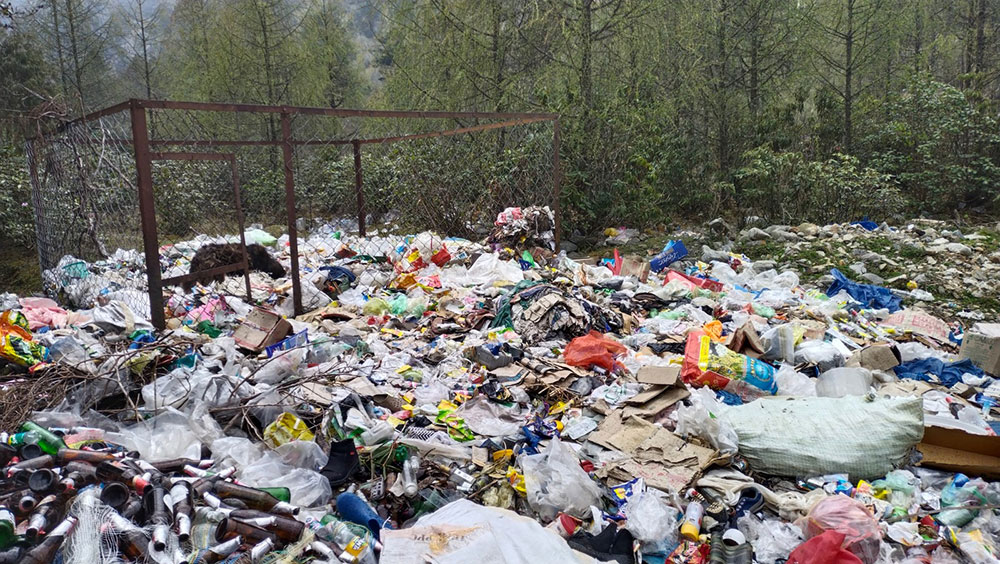Neten Dorji | Merak
Merak village in Trashigang is struggling with an issue that is usually more prevalent in urban areas: waste. Despite cleaning campaigns conducted by the gewog administration, school, and Sakteng Wildlife Sanctuary, the community still lacks a proper place to dispose of waste.
Every ninth day of the month, residents collect waste as part of a monthly cleaning campaign. Gup Nima said that during this time, they gather at least 2,000 to 3,000 kilograms of waste from the five chiwogs, which have around 351 households.
“Waste is a growing problem in the community. Both locals and visitors throw waste without care. The gewog administration is educating people on waste management, but it is difficult to change their mindset,” said Nima.
Thinley Wangmo, a villager, said that in the past, plastic and paper waste was rare in Merak. However, after the village got connected with the road, approximately 20 shops opened, and the most common waste here is plastic and food and drink wrappers generated from the shops.
Currently, there are two temporary dumpsites in Merak, but they are not sufficient for managing waste. The Sakteng Wildlife Sanctuary has provided waste bins in the past to maintain cleanliness in the village and surroundings.
“Without a proper disposal site, transporting waste and finding suitable landfill sites is challenging,” Nima said. “With road connectivity, collecting waste by vehicle is now possible.”
The gewog administration is planning to install dustbins in different strategic areas for better waste management. “It would be much more convenient if we get a vehicle for waste collection,” said Nima.
Meanwhile, park officials claim that to minimize waste, they have conducted waste craft training within the community. They taught residents how to recycle and reuse waste by creating lunch bags and mats, but it has not been very effective.
Although there are dumpsites in Merak, locals are not allowed to burn waste within the locality.
“Collecting waste and dumping it in Trashigang and Rangjung landfill is the only solution,” said gewog official. “Due to budget constraints, we cannot bring all waste to the respective landfill.”
Visitors contribute to the waste problem by littering plastic wrappers, beer and juice bottles wherever they go. Civil servants claim that monthly cleaning campaigns will not solve the issue of keeping the village clean, but raising awareness about illegal dumping and littering is vital.

With only two temporary dumpsites, Merak is running out of space for waste
“The problem is exacerbated by the distance and location. People can segregate, but transporting the waste for recycling is a problem. It is not worth it unless there is a special program to fund such an initiative,” says one official.
Meanwhile, residents say that they have a traditional practice of cleaning their surroundings on the 11th day of every Bhutanese calendar month to pay homage to their local deity, Aum Jomo. They are also not allowed to conduct cleaning campaigns from January to March, the time when people migrate to their winter grazing ground.
Although the people of Merak understand the importance of waste management, some are still hesitant to take care of the waste and dump it near riverbanks, according to a civil servant. The locals also believe that burning waste would offend their local deity, Aum Jomo.
Ngaden, a 61-year-old resident, said: “She is our local deity who protects us. She controls the weather and productivity of our tshamdro. Whatever waste is burnt in the locality, there is a sudden change in the weather, and different diseases occur, even causing death.”


